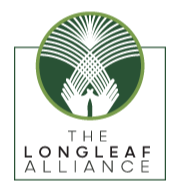Videos
WLFW Pollinator Conservation Webinar Series: Session #1 Pollination Biology
Session 1 of WLFW Pollinator Conservation Webinar series, presented by Celia Vuocolo, WLFW Pollinator Coordinator-East with Quail Forever & USDA-NRCS. In this first session of the series, topics covered include threats to pollinators, plant pollination strategies, pollinator foraging behaviors, and a quick overview of bees of conservation concern.
Webinars and Videos Thumbnail
Agriculture Deputy Secretary Krysta Harden and U.S. Department of Agriculture (USDA) New and Beginning Farmer and Rancher Program Coordinator Lila McFarland host a U.S. Department of Agriculture (USDA) employee-only webinar on recent new farmer announcements, including an in-depth look at everything the new and improved www.usda.gov/newfarmers can do on Monday, Nov. 23, 2015.
Grazing Gone Native
Producer Drexel Atkisson talks about role of NWSFs in his grazing system in dealing with drought.
Partner Workspace
This space is meant to be user-friendly. We hope you can find other partners here, share information and training materials, and enhance each other's capability to achieve large-scale change in working landscapes. The workspace can be used to draft training materials, unedited videos, and other content not yet ready for broader sharing, as well as store some materials that may be sensitive for immediate or near-term sharing.
Workspace
This space will be used to draft training materials, unedited videos, and other content not yet ready for broader sharing, as well as store some materials that may be sensitive for immediate or near-term sharing. Workshop Teams WLFW-Pine Savannah Workshop Materials Logistics Planning Lists of Workshop Attendees Workshop Input & Feedback Input (pre-workshop coordination) Feedback WLFW-Grasslands Workshop Materials Logistics Planning Lists of Workshop Attendees Workshop Input & Feedback Input (pre-workshop coordination) Feedback Documents in Progress WHEGs Job sheets Outreach Materials Partnership Development On-going Research Funded UGA-2018 UT-2018 Datasets GIS Products Other Tools
Northern Bobwhite Quail, Grassland and Savannas Partner Workspace
This space is meant to be user-friendly. We hope you can find other partners here, share information and training materials, and enhance each other's capability to achieve large-scale change in working landscapes. The workspace can be used to draft training materials, unedited videos, and other content not yet ready for broader sharing, as well as store some materials that may be sensitive for immediate or near-term sharing.
U.S. Fish & Wildlife Service Gopher Tortoise
The gopher tortoise is a large burrowing tortoise that occurs in upland pine forests of the southeastern United States. The gopher tortoise is one of five tortoise species native to North America and the only tortoise species east of the Mississippi River. The sex of individual tortoises can usually be determined by shell dimensions. A male tortoise has a greater degree of lower shell concavity, and a longer gular projection. However, the sex of tortoises at maturity size is difficult to determine (U.S. Fish and Wildlife Service 1990).
Webinar: Working with Landowners to Build Resilience Across the Landscape
This session identified strategies to connect with landowners.
Webinar: Restoration on Private Lands Pt. 2 – Implementation, Biological Control Options, and Restoring for Birds
Part two of this webinar series includes extended Q&A geared towards restoration on private lands.
Webinar: Restoration on Private Lands Pt. 1 – Restoration Planning, Weed Control, and Recommended Herbicides
This two-part webinar series includes extended Q&A geared towards restoration on private lands.
Webinar: From data to decision: Pathways for salt marsh conservation and restoration
Learn about conservation and restoration activities led by the Partnership for the Delaware Estuary that highlight the interactive nature of monitoring, tool development, and interventions to inform goal-based site management.
Fire Leadership for Women: Three 20-Day Training Opportunities in 2023
During the 20-day session, participants will experience 10 - 12 days of hands-on burning in complex situations as wildland urban interface, various fuel types, and will work for several different agencies with unique management objectives.
SE FireMap Phase II: Developing the Decision Support System Webinar
A free and open webinar for practitioners and the public to learn about the Southeast (SE) FireMap and next steps in its development as an operational decision-support tool for resource managers. In this next phase, the SE FireMap aims to provide up-to-date information to support fire management and conservation efforts. Representatives from USDA-NRCS, Tall Timbers Research, and USGS lead the webinar.

























